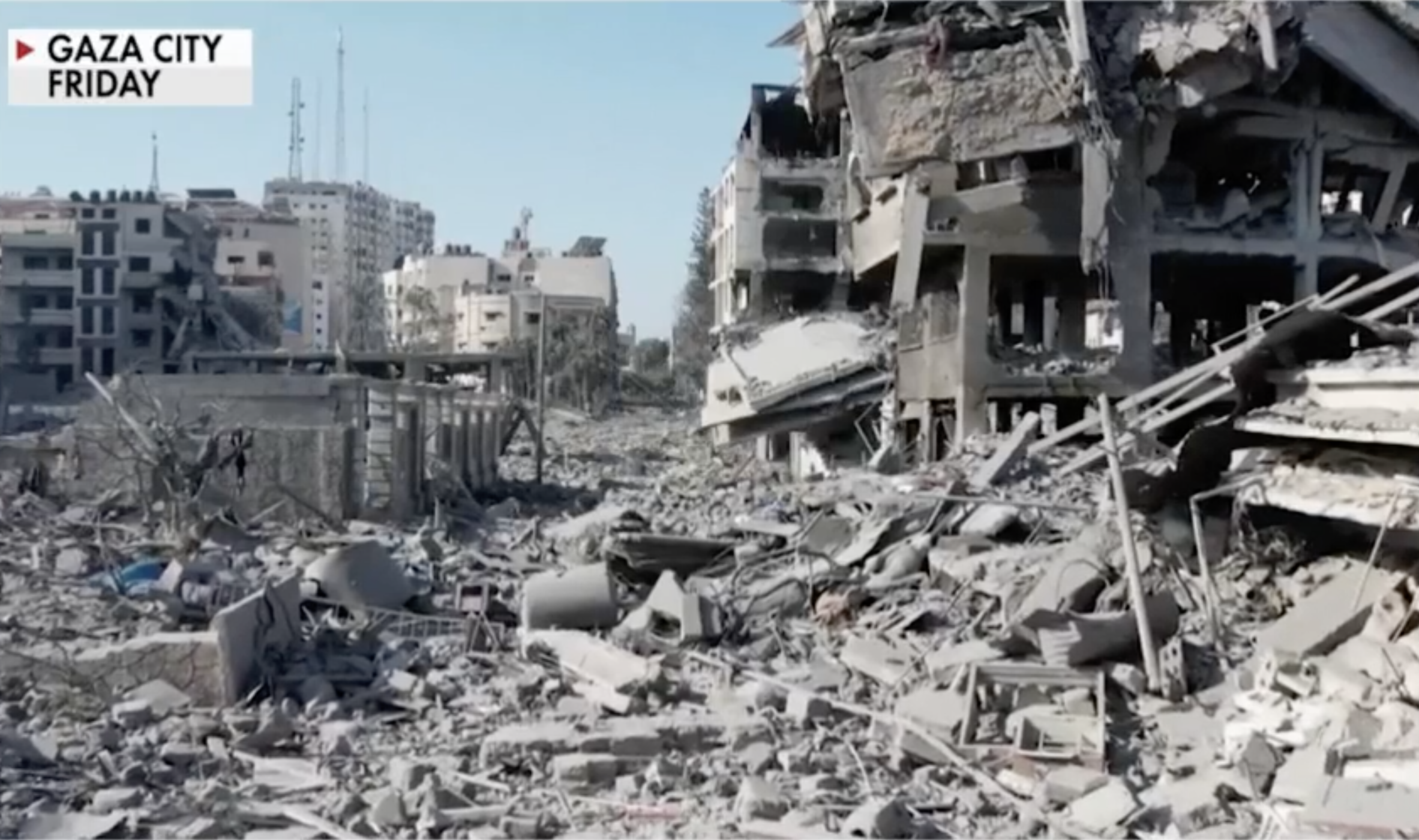This has been confirmed independently by the Pentagon, according to President Biden and the National Security Council; by an intercept and drone and radarfootage released by the Israeli military; and perhaps most persuasively by looking at the hospital in daylight. The evidence indicates that a rocket launched by Palestinian Islamic Jihad is the likely culprit.
The question is why the media and so many others ran with the story of Israeli war crimes. They did so on nothing but the word of the jihadist group that committed the largest mass slaughter of Jews since the Holocaust.
“Israeli Strike Kills Hundreds in Hospital, Palestinians Say,” read the initial New York Times headline. Rep. Ilhan Omar (D., Minn.) announced on Twitter: “Bombing a hospital is among the gravest of war crimes. The IDF reportedly blowing up one of the few places the injured and wounded can seek medical treatment and shelter during a war is horrific. @POTUS needs to push for an immediate ceasefire to end this slaughter.”
The trend everywhere was to let Hamas drive the story, leading readers astray. “BREAKING: The Gaza Health Ministry says at least 500 people killed in an explosion at a hospital that it says was caused by an Israeli airstrike,” the Associated Press wrote in a tweet seen 13 million times. The Gaza Health Ministry is controlled by Hamas. The AP’s subsequent clarification that Israel attributed the strike to a Palestinian rocket has fewer than 200,000 views. But the friendly-fire explanation should always have been plausible and held out as a possibility. Israel doesn’t target hospitals, and it had already counted some 450 Palestinian rockets that fell inside Gaza.
What actually happened? The Israel Defense Forces say that Palestinian Islamic Jihad began a barrage of 10 rockets at Israeli cities at 6:50 p.m. local time Tuesday. This is confirmed by live video, including on Al Jazeera, which shows one rocket malfunctioning and crashing in Gaza at 6:59 p.m.—the same time reports emerged of a blast near the hospital. Israel’s Channel 12, an independent commercial station, caught it on video, too. Israel says it carried out no attacks at that time. Gazans near the hospital reportedly complained about the distinct shriek of rocket launches.
Soon after, Hamas fighters discussed what had happened. We know this because—in a rare move that reflects the stakes here—Israel released a recording of an intercepted phone call between two Hamas members:
“I am telling you this is the first time we see a missile like this falling, and so that’s why we are saying it belongs to Palestinian Islamic Jihad.”
“It’s from us?”
“It looks like it. They are saying that the shrapnel from the missile is local shrapnel and not like Israeli shrapnel.”
“But God bless, it couldn’t have found another place to explode?”
“They shot it coming from the cemetery behind the hospital, and it misfired and fell on them.”
With morning came clear sight of the hospital—which hadn’t sustained structural damage. Instead, it could be seen that the blast had occurred in the parking lot, and had set off a large fire, likely from the accelerant of a failed long-range rocket.
The kind of crater that would indicate an Israeli strike is nowhere to be found. We know what those look like, because they are all over Gaza. But not here. Cars as close as 10 yards to the impact sustained no structural damage. Ditto for the nearby buildings. Instead, the vehicles were charred from fire—what you’d expect from a Palestinian rocket.
The situation also makes it implausible that 500 were killed. Hamas reported casualty figures way sooner than it could possibly have known—and that should have been a tip-off that something wasn’t right.
But the media bought it and shifted the Western discussion to what Israel had supposedly done rather than what Hamas actually did and what Israel needs to do to defend its citizens.
Why? One answer is that opponents of Israel, including many journalists, wanted to believe Hamas’s story because it fits their image of Israel as a villain or enemy. And no doubt many in the West are determined to believe the worst of Israel even when it’s been disproved. But the larger risk is across the Islamic world. Hamas’s lie—and the Western media’s propagation of it—brought huge crowds to the streets in Ramallah, Amman, Beirut and Baghdad.
Crowds tried to attack the Israeli Embassy in Jordan and the U.S. Embassy in Lebanon. Moderating Arab leaders were pushed into making hasty statements about “Israeli criminal practices” (Saudi Arabia) and “the Israeli attack that targeted Al Ahli Baptist Hospital” (United Arab Emirates).
These leaders fear their own populations, whose prejudices they know all too well. The rulers could find themselves blamed for strengthening relations with Israel, the hospital killers.
The Arab street has been given a new blood libel: that Jews slaughter Palestinians in their hospitals. That we can be confident it is false, like the 2002 “Jenin massacre,” doesn’t mean they will ever know that. No matter how this war ends, Islamic Jihad’s strike and Hamas’s propaganda are likely to feed violence against Jews and Israel—with an assist from the Western press.
To see this article in its entirety and to subscribe to others like it, please choose to read more.
Source: The Media, Like the Terrorists, Aim at Israel and Miss – WSJ
 Listen Online
Listen Online Watch Online
Watch Online Find a Station in Your Area
Find a Station in Your Area







 Listen Now
Listen Now Watch Online
Watch Online
